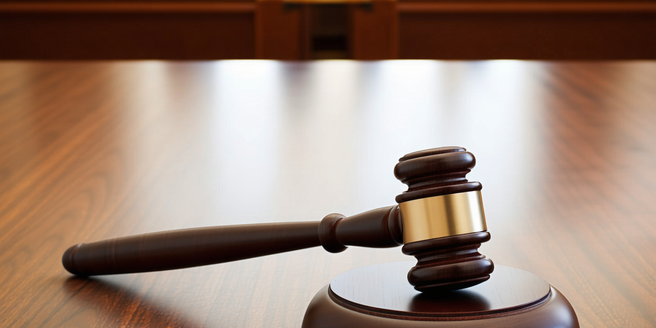
Introduction to Class Actions in Consumer Protection
| Topic | Description | Example |
| Definition | A lawsuit filed by a group of individuals. | Consumers against a company. |
| Purpose | Hold corporations accountable. | Product defects litigation. |
| Eligibility | Any consumer affected by an issue. | Purchasers of a faulty product. |
| Process | Legal proceedings in a court. | Filing a claim in court. |
| Outcome | Financial compensation or relief. | Refunds or product recall. |
| Impact | Reform consumer practices. | Strengthen consumer laws. |
Understanding the Basics of Class Action Lawsuits
Class action lawsuits serve as powerful tools for consumers who face the daunting task of challenging large corporations over issues such as defective products, false advertising, and other unfair practices. These lawsuits allow a group of similarly harmed individuals to collectively sue a defendant, providing strength in numbers and making litigation feasible for individual consumers. The specifics of a class action can vary, but generally, they must be certified by a court to ensure that all parties involved share common legal or factual issues. This process helps in streamlining the judicial process and conserving resources. Class actions can result in substantial settlements or verdicts, offering monetary compensation or requiring changes in business operations, thus serving not only as a remedy for the affected individuals but also as a deterrent against corporate malpractices.
How Class Action Settlements Work
Class action settlements are agreements reached between the plaintiffs and the defendant that aim to resolve the issues brought forward without going through a full trial. After a settlement proposal is negotiated, it must be approved by the court to ensure that it is fair, adequate, and reasonable for all class members. This includes notifying all affected individuals, who may then choose to accept the terms or opt out of the settlement if they prefer to pursue individual litigation. The court also evaluates whether attorneys’ fees are justified based on the efforts undertaken. Once approved, the settlement typically involves monetary compensation distributed among the class members or mandated changes in business practices. Such settlements not only compensate affected consumers but often lead to broader industry changes, promoting fairer business conduct across the board.
The Role of Consumer Rights in Class Actions
Consumer rights are at the heart of class action lawsuits, serving to protect individuals from deceptive or unfair trade practices. These rights ensure consumers have access to safe products and honest marketing, and class actions are a mechanism to uphold these principles when they are violated. Through the collective power of the group, affected consumers can tackle issues like price-fixing or misleading labeling that might otherwise go unchecked due to individual plaintiffs’ limited resources. By defending consumer rights, class actions contribute to the establishment and reinforcement of standards in the marketplace. They also provide a public platform that raises awareness and educates consumers about their rights, fostering a marketplace that respects these rights as fundamental values in commercial activities.
Benefits of Class Action Settlements for Consumers
Class action settlements offer several significant advantages for consumers, chiefly the ability to seek recompense for damages that might be too small for individual lawsuits. These legal mechanisms aggregate claims, allowing plaintiffs to share legal costs and stand on an equal footing with well-resourced corporate defendants. As a result, consumers can obtain compensation for financial losses, remediation measures, or changes to unfair business practices. Furthermore, settlements can mandate corporate reforms, enhancing product safety and instigating systemic changes in corporate policies. For consumers, these settlements provide not only individual relief but also contribute to the broader goal of promoting a fairer marketplace, thereby serving both a restorative and preventative function in consumer law.
Common Types of Consumer Class Action Cases
Consumer class action lawsuits typically arise from situations where companies have allegedly wronged a large portion of the public. Common cases include defective products, wherein a product is found to have a wide-ranging defect post-purchase, affecting all users. Another prevalent type pertains to financial frauds, such as hidden fees or charges by financial institutions. False advertising cases, where the marketed use or benefit of a product is grossly overstated or erroneous, are also frequent. Additionally, cases against manufacturers for using sub-par materials in consumer goods are notable. Privacy breaches involving unauthorized sharing of personal data have also seen a rise, reflecting the growing concerns over digital privacy. These cases not only provide recourse to affected individuals but also promote stringent adherence to consumer protection laws.
Legal Processes Involved in Class Actions
The legal process of a class action lawsuit begins with the filing of a complaint by the lead plaintiff, representing the class of affected individuals. The court then decides whether the case qualifies as a class action by examining if there are enough claimants with similar issues – a process known as certification. If certified, the case enters discovery, where both parties collect evidence to support their claims or defenses. This phase is followed by motions and possible settlement discussions. Should a settlement not be reached, the case proceeds to trial. During the trial, evidence is presented, after which a judge or jury delivers a verdict. If successful, the settlement is distributed among the class members. An appeal may follow, further prolonging the resolution timeline, but each step is crucial to ensuring justice and fairness for all involved.
Examples of Successful Consumer Class Action Settlements
There have been numerous successful consumer class action settlements that demonstrate the effectiveness of this legal approach. One landmark case is the Volkswagen emissions scandal, where the company agreed to a settlement of billions for manipulating emission tests – compensating affected car owners and investing in green projects. Another notable example is the Equifax data breach settlement, where Equifax agreed to a large settlement for failing to protect consumers’ personal data. Similarly, a settlement involving Wells Fargo for opening unauthorized accounts for customers highlighted the utility of class actions in addressing fraudulent business practices. These cases underscore how class action settlements serve as powerful tools for holding corporations accountable and providing restitution to consumers, often leading to regulatory changes and improved consumer protection practices.
Challenges Facing Consumer Class Actions Today
Despite their potential benefits, consumer class actions face several challenges in the modern legal landscape. The process of certifying a class can be arduous, requiring extensive legal resources and time, thus deterring many litigants. There’s also a recurring debate over settlements, particularly concerning attorneys’ fees which might consume a large portion of the awarded amount, leaving less for the class members. Furthermore, recent legal trends have seen an increase in arbitration clauses in consumer agreements, which can largely prevent class actions by requiring mandatory individual arbitration instead. However, despite these hurdles, consumer advocacy groups continue to fight for the rights of individuals, pushing for legislative reforms that protect the class action mechanism as a critical tool for enforcing consumer protection laws.
Future Trends in Consumer Protection Lawsuits
The future of consumer protection lawsuits is set to evolve with the advancement of digital technologies and growing consumer awareness. As e-commerce platforms expand, issues like data privacy and cybersecurity are likely to become prominent areas for class actions. Environmental claims against corporations could rise, reflecting increased public concern over climate change and sustainability. Moreover, the expansion of global trade might see cross-border consumer protection cases gain prominence, necessitating international coordination. There’s also a trend towards legislation that curtails arbitration clauses, which are perceived as restricting collective consumer redress. As technology and global markets evolve, so will legal strategies and protections, potentially leading to more robust frameworks that better protect consumer rights against the challenges of modern capitalism.

